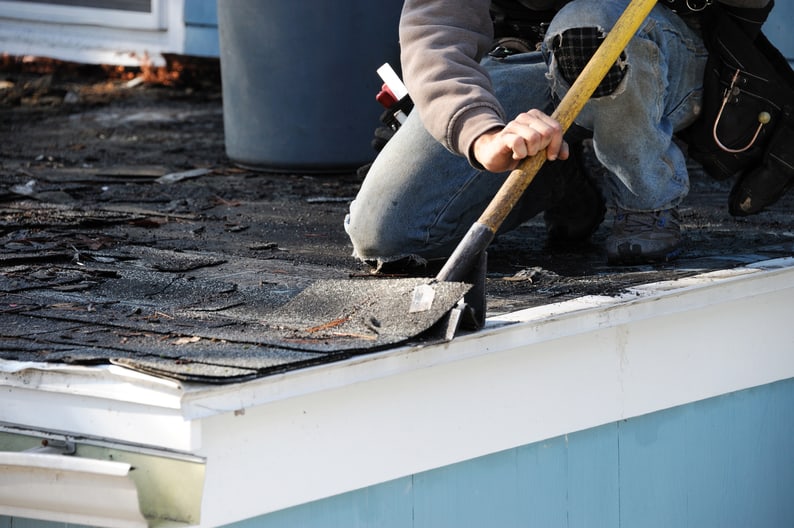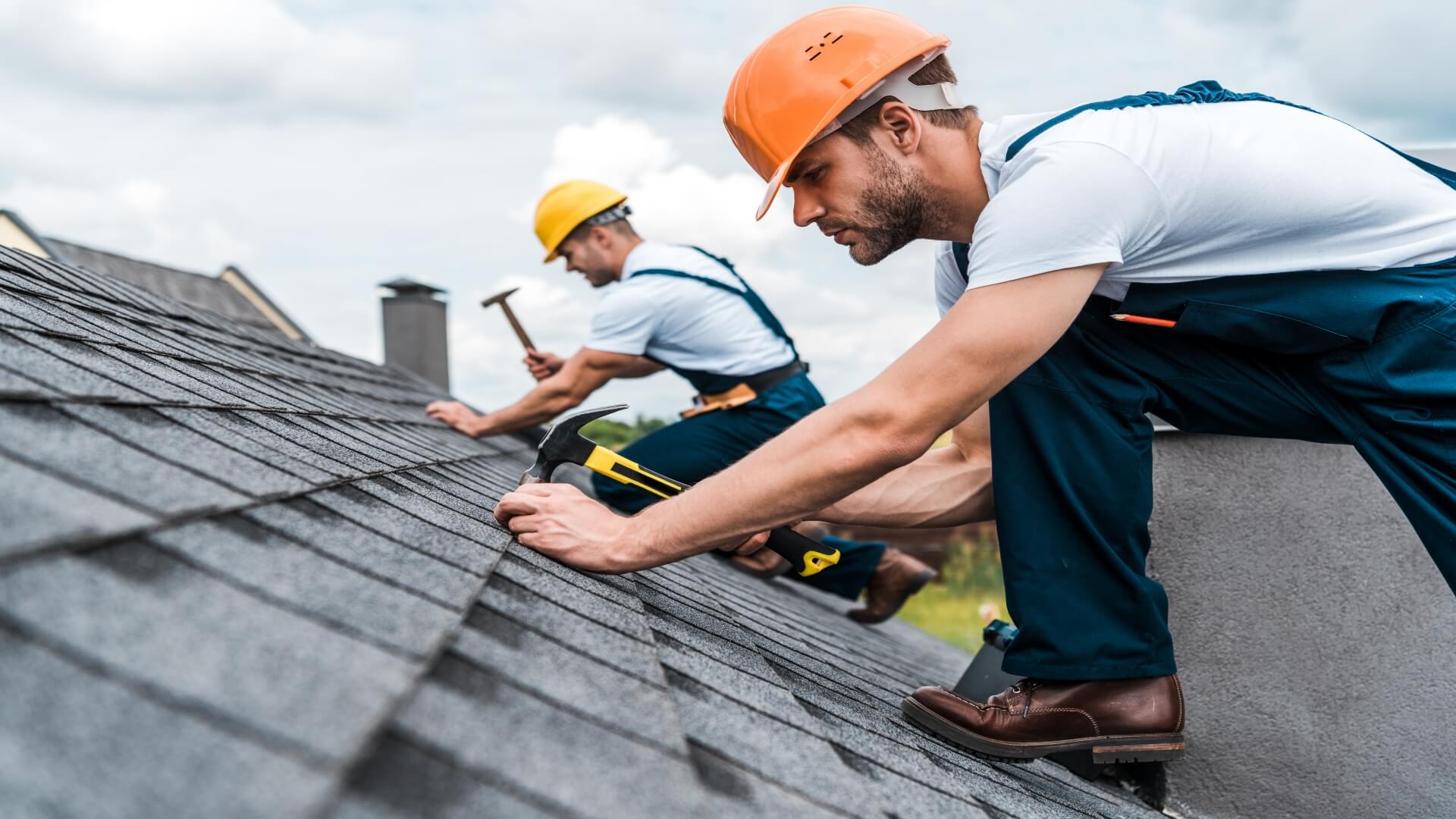Preventative Roofing Upkeep: Tips to Prevent Pricey Repair Services
To avoid expensive repair services, you need to inspect your roofing system regularly for missing or damaged roof shingles, tidy your downspouts and rain gutters to stop clogs, and trim overhanging branches. Do not forget to look for indications of leaks and ensure appropriate air flow in your attic. Scheduling specialist evaluations a minimum of yearly can aid capture covert issues early. These simple actions can greatly extend your roofing system's life expectancy, and there's lots extra you can do to protect your financial investment.
Inspect Your Roof Frequently
When you check your roof covering regularly, you can capture prospective problems before they end up being pricey repair work. Beginning by examining for missing out on, fractured, or crinkling shingles; these are indicators that your roof may require focus.
After a storm, it's important to analyze your roof for damage caused by high winds or hefty debris. Do not fail to remember to inspect the underside of your roofing in the attic room; look for indicators of dampness or mold, which can suggest leaks.
Tidy Seamless Gutters and Downspouts
Routine roofing system examinations naturally lead to an important job: cleansing your seamless gutters and downspouts. Blocked seamless gutters can trigger water to back up, causing prospective roof leakages and architectural damages. To avoid these problems, make it a behavior to examine your seamless gutters at the very least twice a year, specifically after hefty tornados or drop when leaves gather.
When you clean them, begin by eliminating debris like leaves, twigs, and dust. You can use a scoop or your hands, yet keep in mind to use handwear covers. After removing the debris, flush the rain gutters with water to assure correct water drainage. Do not forget to inspect downspouts for blockages. You may require to make use of a plumbing's serpent or a hose to get rid of the blockage. if water isn't flowing openly.
Address Overhanging Branches
Overhanging branches can posture a major threat to your roof covering, so it is essential to cut them frequently. Not only can they cause damages during tornados, yet they can likewise invite pests. Make it a habit to inspect for any indicators of wear or damage to maintain your roof covering in leading form.
Trim Regularly
One of the most important actions in roof maintenance is to trim those branches that hang also close to your home. Regularly reducing back these branches maintains your roofing system clear and minimizes the threat of insects and leakages. You don't need to tackle this job alone; working with a specialist arborist can ensure efficient and secure cutting, securing your roofing system and enhancing your home's total look.
Inspect for Damages
 roof repair
roof repair
Inspect for Harmed or Missing Shingles
It's important to check your shingles regularly for any type of damages or missing out on items. If you identify any issues, replace missing roof shingles promptly to stop additional issues. Maintain an eye on just how the weather condition affects your roofing system, as harsh problems can lead to tear and use.
Inspect Consistently for Damages
On a regular basis inspecting your roofing system for damage is essential to keeping its honesty and prolonging its lifespan. Examine your roofing after strong winds or hefty tornados, as these conditions can displace or damage shingles. By making roofing system evaluations a regular component of your maintenance routine, you can catch issues early and conserve on your own from costly fixings down the line.
Change Missing Out On Tiles Quickly
After looking for any kind of damages throughout your assessments, you may discover that some roof shingles are missing out on or endangered. Do not wait to change them; timely activity can stop further problems. Missing out on tiles reveal your roofing to dampness, which can bring about leakages and more extensive damages with time.
Make certain to utilize roof shingles that match your roofing system's shade and design for a seamless look. Keeping your roofing in top form is essential for securing your home and avoiding pricey repair work down the line.
Display Climate Influence Frequently
As storms roll via your area, maintaining a close eye on your roofing system becomes important. After each storm, take a moment to examine your roof covering for any type of damaged or missing roof shingles. Search for granules in your rain gutters, which can suggest deterioration. If you spot any kind of roof shingles that are fractured, crinkled, or entirely gone, deal with the issue immediately to stop water leakages and additional damage. Climbing onto the roofing isn't always required; you can frequently identify problems from the ground with binoculars. Do not fail to remember to look for debris build-up, as it can catch dampness and lead to rot. Regular tracking aids you capture small concerns prior to they rise, saving you money and time over time.
 roof repair
roof repairEnsure Correct Air Flow
While lots of home owners concentrate on the exterior and structural aspects of their roofs, assuring proper ventilation is vital for keeping its longevity and efficiency. Poor air flow can cause warm build-up and dampness build-up, which can cause damage with time. Make sure your attic room has enough air movement by mounting soffit vents and ridge vents. This setup permits a continual flow of fresh air, aiding to control temperature and reduce moisture levels.
Appropriate ventilation not just boosts your roof covering's lifespan however likewise improves energy efficiency, maintaining your home comfortable year-round. By taking these actions, you're investing in your roof covering's health and avoiding expensive repair work down the line.
Look for Signs of Leakages
Appropriate air flow aids protect against wetness buildup, yet despite excellent air flow, it's vital to watch out for signs of leakages. Start by evaluating your ceilings and wall surfaces for water discolorations or staining, which can suggest a leak over. Do not neglect to check your attic for wet areas, mold and mildew, or mold, as these can be early warning indicators. Try to find peeling off paint or bubbling wallpaper, also; these usually signal dampness invasion.
Outside, analyze your roofing system for missing roof shingles, fractures, or damaged flashing, as these susceptabilities can lead to leakages. Consistently examining for these indications will aid preserve your roof covering's stability and maintain your home secure and completely dry.
Arrange Expert Examinations
 roof repair
roof repair
Go for at least one assessment each year, preferably in the spring or autumn, to align with seasonal modifications. During these examinations, specialists can identify potential hazards like missing out on roof shingles, compromised flashing, or indicators of mold and mildew. They'll additionally look for debris buildup that might result in water pooling.
Do not wait on visible signs of difficulty; taking proactive actions can prolong your roof covering's life expectancy. Investing in routine evaluations not only shields your home but also offers you assurance understanding your roofing is in good problem.
Frequently Asked Questions
How Usually Should I Perform Roofing Inspections?
You need to carry out roofing inspections a minimum of twice a year, preferably in spring and loss. Regular checks aid you spot possible problems early, saving you money and time on pricey repair services down the line.
What Tools Do I Need for Roof Upkeep?
For roofing maintenance, you'll require a tough ladder, harness, roof covering nails, a hammer, an energy knife, caulk, a trowel, and a flashlight. Do not fail to remember gloves and security goggles to maintain yourself shielded!
Can I Clean My Roofing Myself?
Yes, you can clean your roof on your own. Just make specific you have the right tools, wear safety and security gear, and adhere to correct methods. It is very important to be cautious to stay clear of accidents and ensure efficient cleaning.
Just How Can I Identify Roofing Leaks Early?
To recognize roof leaks early, you'll desire to evaluate your roofing consistently. Seek water spots, mold and mildew, or missing shingles. Take note after heavy rainfall, and don't hesitate to inspect the attic for damp places.
What Are the Indicators I Need a New Roof?
If you notice curled or missing tiles, persistent leakages, or water discolorations on ceilings,You'll require a brand-new roofing. In addition, if your roof covering's age exceeds twenty years, it's sensible to take a look ponder replacement quicker instead of later.
To prevent pricey fixings, you must examine your roofing system on a regular basis for missing or harmed roof shingles, tidy your rain gutters and downspouts to stop clogs, and trim overhanging branches. Missing tiles subject your roof to wetness, which can lead to leaks and more extensive damages over time.
After each storm, take a minute to evaluate your roof for any kind of damaged or missing out on shingles.Outside, analyze your roof for missing roof shingles, fractures, or damaged flashing, as these vulnerabilities can lead to leaks.To determine roof covering leakages early, you'll desire to inspect your roof on a regular basis.